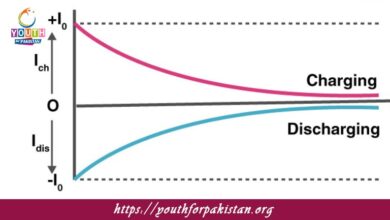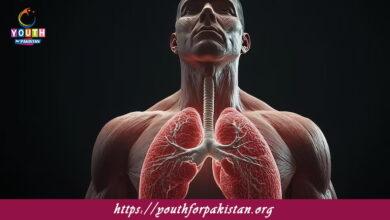Enthalpy Change Δh MDCAT MCQs with Answers

Welcome to the Enthalpy Change Δh MDCAT MCQs with Answers. In this post, we have shared Enthalpy Change Δh Multiple Choice Questions and Answers for PMC MDCAT 2024. Each question in MDCAT Chemistry offers a chance to enhance your knowledge regarding Enthalpy Change Δh MCQs in this MDCAT Online Test.
Enthalpy change (ΔH) is defined as:
a) The heat content of a system
b) The difference between the heat absorbed and released
c) The heat absorbed or released at constant pressure
d) The change in volume of a system
For an exothermic reaction, ΔH is:
a) Positive
b) Negative
c) Zero
d) Variable
The enthalpy change for a reaction at constant pressure is represented by:
a) ΔH
b) ΔS
c) ΔG
d) ΔU
If ΔH for a reaction is +25 kJ/mol, the reaction is:
a) Endothermic
b) Exothermic
c) Isothermal
d) Isobaric
Hess’s Law states that:
a) The enthalpy change is the same regardless of the number of steps in a reaction
b) Enthalpy change is not dependent on the path taken
c) The total enthalpy change for a reaction is the sum of enthalpy changes for individual steps
d) Enthalpy change is equal to the change in entropy
The standard enthalpy change of formation (ΔH_f°) is:
a) The enthalpy change when one mole of a substance is formed from its elements in their standard states
b) The heat released during the combustion of one mole of a substance
c) The enthalpy change for a reaction at constant volume
d) The heat absorbed when one mole of a substance dissolves
The enthalpy change of combustion is:
a) The heat absorbed when one mole of a substance reacts with oxygen
b) The heat released when one mole of a substance is burned completely in oxygen
c) The enthalpy change for a phase transition
d) The heat absorbed during dissolution
The enthalpy change associated with a phase transition is known as:
a) Enthalpy of fusion
b) Enthalpy of vaporization
c) Enthalpy of formation
d) Enthalpy of combustion
The enthalpy of vaporization is:
a) The heat absorbed when a liquid turns into a gas
b) The heat released when a gas turns into a liquid
c) The heat absorbed when a solid turns into a liquid
d) The heat released during combustion
In an endothermic reaction, the system:
a) Releases heat to the surroundings
b) Absorbs heat from the surroundings
c) Maintains constant temperature
d) Increases entropy
The enthalpy change for the reaction: H₂(g) + ½ O₂(g) → H₂O(l) is:
a) Negative and exothermic
b) Positive and endothermic
c) Zero and isothermal
d) Positive and exothermic
For the reaction: A + B → C + D, if ΔH = +10 kJ/mol, the reaction is:
a) Exothermic
b) Endothermic
c) Isothermal
d) Adiabatic
The heat absorbed or released during a reaction can be measured using:
a) A calorimeter
b) A thermometer
c) A voltmeter
d) A spectrometer
If a reaction is carried out in multiple steps, the overall enthalpy change can be determined by:
a) Adding the enthalpy changes of the individual steps
b) Subtracting the enthalpy changes of the individual steps
c) Averaging the enthalpy changes of the individual steps
d) Multiplying the enthalpy changes of the individual steps
The enthalpy change of reaction can be calculated from:
a) The bond energies of the reactants and products
b) The temperature change of the system
c) The pressure change in the system
d) The concentration of the reactants and products
The enthalpy change for a reaction is independent of:
a) The path taken
b) The temperature
c) The pressure
d) The physical state of the reactants and products
The enthalpy change of solution is:
a) The heat absorbed or released when a solute dissolves in a solvent
b) The heat absorbed or released during a phase change
c) The heat absorbed or released during a chemical reaction
d) The heat absorbed or released when a solid melts
For the reaction: 2H₂(g) + O₂(g) → 2H₂O(g), if ΔH is -150 kJ/mol, the reaction is:
a) Endothermic
b) Exothermic
c) Isothermal
d) Isobaric
The enthalpy change of reaction can be expressed in:
a) kJ/mol
b) J/g
c) kJ/g
d) J/mol
The enthalpy change of formation for an element in its standard state is:
a) Zero
b) Positive
c) Negative
d) Variable
The enthalpy change for the dissolution of a salt in water is known as:
a) Enthalpy of solution
b) Enthalpy of formation
c) Enthalpy of combustion
d) Enthalpy of vaporization
For an endothermic reaction, the enthalpy change is:
a) Positive
b) Negative
c) Zero
d) Equal to the change in entropy
The enthalpy change for a reaction that absorbs heat from the surroundings is:
a) ΔH > 0
b) ΔH < 0
c) ΔH = 0
d) ΔH is variable
The enthalpy change for a reaction at constant pressure is often measured in:
a) kJ/mol
b) J/g
c) kJ/g
d) J/mol
The enthalpy change of a reaction can be affected by:
a) Temperature
b) Pressure
c) Concentration
d) All of the above
If a reaction absorbs 50 kJ of heat, the ΔH for the reaction is:
a) +50 kJ
b) -50 kJ
c) 0 kJ
d) 50 kJ
The enthalpy change for the reaction of hydrogen with oxygen to form water is:
a) Positive and endothermic
b) Negative and exothermic
c) Zero and isothermal
d) Variable depending on conditions
The enthalpy change for a reaction can be determined using:
a) Hess’s Law
b) Dalton’s Law
c) Raoult’s Law
d) Henry’s Law
The heat absorbed or released during a reaction at constant volume is known as:
a) The change in internal energy
b) The enthalpy change
c) The change in entropy
d) The change in Gibbs free energy
The enthalpy change for the reaction: A + B → C + D, if ΔH = -20 kJ/mol, indicates:
a) The reaction is exothermic
b) The reaction is endothermic
c) The reaction is isothermal
d) The reaction is adiabatic
The enthalpy change associated with the dissolution of a substance is:
a) Enthalpy of solution
b) Enthalpy of formation
c) Enthalpy of combustion
d) Enthalpy of vaporization
The enthalpy change for the reaction of hydrochloric acid with sodium hydroxide to form water is:
a) Endothermic
b) Exothermic
c) Isothermal
d) Adiabatic
The enthalpy change for a reaction can be calculated from:
a) The heat absorbed or released during the reaction
b) The change in volume of the system
c) The change in pressure of the system
d) The change in concentration of the reactants and products
The enthalpy change for a reaction can be affected by:
a) The pressure
b) The temperature
c) The concentration of reactants
d) All of the above
The enthalpy change for a reaction is generally measured under:
a) Constant pressure
b) Constant temperature
c) Constant volume
d) Constant concentration
The enthalpy change of a reaction can be determined using:
a) A calorimeter
b) A pH meter
c) A conductivity meter
d) A spectrophotometer
The enthalpy change of a reaction can be calculated from:
a) The difference in the heat content of reactants and products
b) The temperature change of the system
c) The pressure change of the system
d) The concentration of the reactants
The enthalpy of reaction is typically expressed in:
a) kJ/mol
b) J/g
c) kJ/g
d) J/mol
The enthalpy change for a reaction is positive when:
a) The reaction is endothermic
b) The reaction is exothermic
c) The reaction is isothermal
d) The reaction is adiabatic
The enthalpy change for a chemical reaction is the heat absorbed or released:
a) At constant volume
b) At constant temperature
c) At constant pressure
d) At constant concentration
If you are interested to enhance your knowledge regarding Physics, Chemistry, Computer, and Biology please click on the link of each category, you will be redirected to dedicated website for each category.




